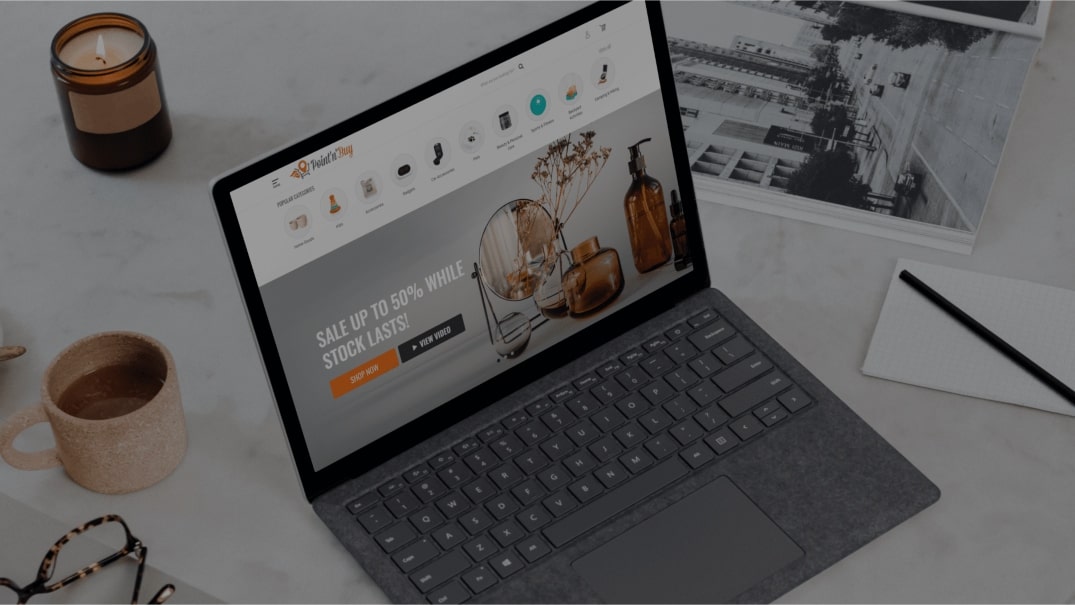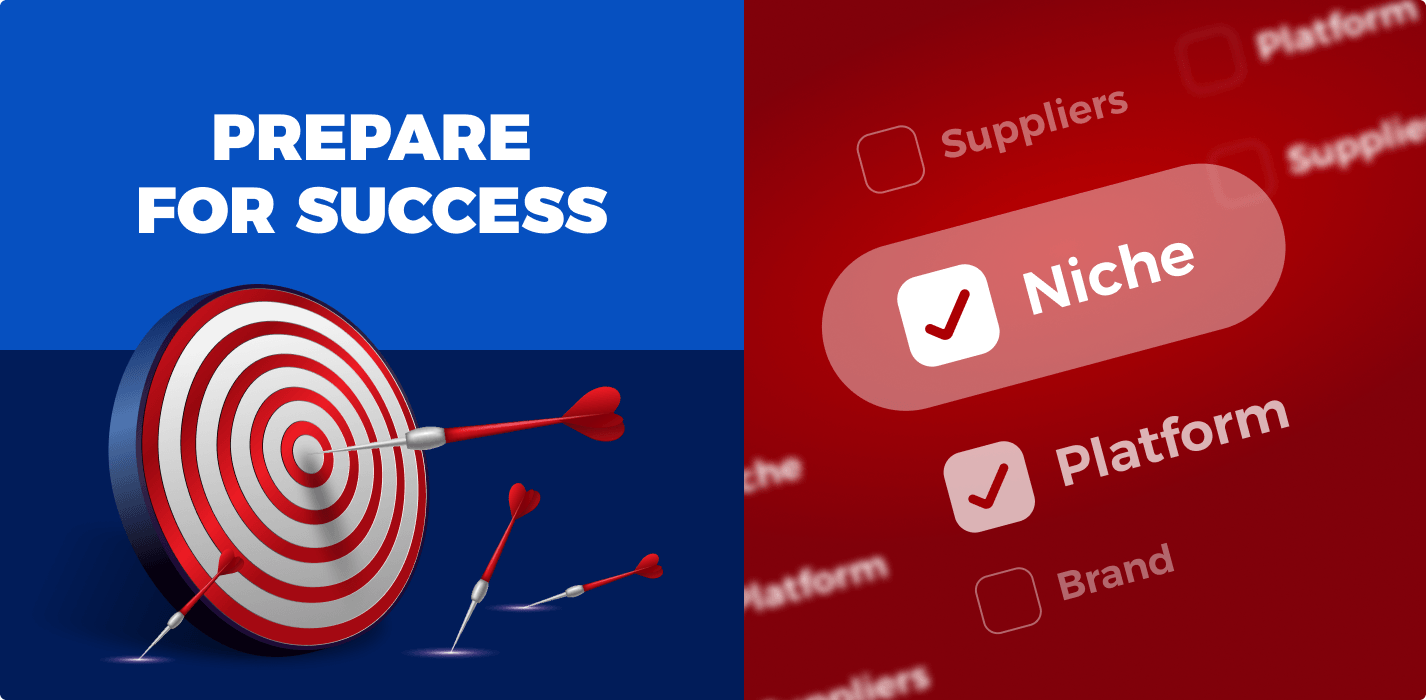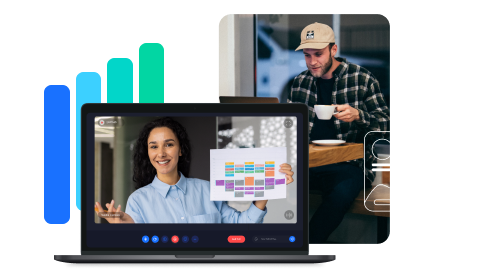Want to start an online business? Hey, there’s no better time to start. According to NASDAQ, 95% of purchases will happen online by 2040, and Statista reports that 2.14 billion people (over a quarter of the world’s population) shop online. And that trajectory will only continue to grow.
If you have a vision of a brand that can stand for something or present a unique product offering to a specific audience, going online is the way to bring your dreams to life.
But you might think – what are the things I need to start an online business? Rest easy – we’ve compiled everything you’ll need to get up and running.
#1 A defined niche

A business always starts with an idea. With seeing a need in the market. Something that either a specific audience needs/wants, or something that has wide appeal. Deciding a niche for your business can easily come from personal interest or experience. Alternatively, it can just come from seeing what is in demand on the market. Conducting some market research can help fine tune your niche or help you get started on ideas if you aren’t set on something specific.
#2 A brand (that’s yours and true to you)

Once you get a niche down, it’s time to create something magical. When you create a brand, you give birth to something that’s one of a kind. Creating a brand will allow you to tell a story to customers as to what your business stands for and why they should choose you as opposed to your competitors.
Like with niche evaluation, brand creation also requires some good research. See what some brands you like do for their company, and consider these points in crafting your own specialty:
- The story behind the brand
- The brand beliefs
- The website design (the colors used and their connection to the brand or a theme)
- The brand voice
- The kind of content the brand posts on social media
- The brand’s emails
You can print out or compile screenshots of themes or brand visuals or moods that inspire you or feel “right” to your brand. This is called mood-boarding, and is a great physical and visual way to piece together what works for your brand.
#3 Registering your business & getting licenses

Whenever you start an online business, you will need to form an LLC (limited liability company) to protect your company and in some countries and states, to take advantage of tax benefits for business owners. Some common go-to’s to establish an LLC are myusacorporation.com and myllc.com. Most countries and states may also require some kind of general business operating license and sales tax license, in addition to having an EIN (employer identification number).
#4 Suppliers, partners, and business model

Niche and brand established and set? Licenses and required permits acquired? Great. Now get ready – because there’s some more heavy lifting ahead. Here are some important steps to establishing the true bread and butter of your business.
-
Business Model
The first thing you should consider after understanding your niche and creating your brand and before finding suppliers and all is what kind of business model you’re trying to operate on. Is your company and brand in the B2C (business to consumer) or B2B (business to business) sector? Do you want to handle product, logistics, and fulfillment all by yourself? Or do you want someone else to provide product and fulfillment on your behalf (Sellvia can help with this)? Knowing the answers to these questions can help you solve the next two components more easily.
-
Suppliers
Whether you choose to outsource your production overseas, to a local factory, or hire talent you know (and find manufacturers on your own), suppliers are what provide the items you need to run your brand. You should ensure the people crafting your items from scratch (or simply providing them) are reliable and have a demonstrated history of production, partnership experience, and adequate supply.
-
Partners
Who’s on board for your business? Are you running the entire thing yourself, are family or friends helping? Do you need to hire employees? Iron out the details. Generally, online businesses can be run by a single person, but that’s if production and a lot of work is outsourced. Otherwise, doing things like manufacturing and fulfillment on your own will require labor.
#5 A site platform, host, and payment gateway

At this point, you will likely have a platform of some sort chosen to run your online business. After all – you are looking to sell on the internet. Luckily, even a simple Google search can yield trustworthy and popular ecommerce-friendly automated dropshipping solutions like AliDropship or Sellvia.
Also, make sure whatever platform you choose supports a mobile version of your site, as Statista reports ecommerce sales to account for 6% of all U.S. retail sales for 2021, with over 10% to be mobile by 2025.
In addition to a website platform, you will also need to find a website host (if your site platform does not include hosting). Some popular choices include:
One crucial thing to make sure during the compilation of designing your site and setting things up on the backend of your platform is to ensure that you have a payment gateway set up. Most ecommerce platforms accept direct-payment providers and external providers. Some technical work is required, so be sure to check with your platform provider to see how to set these up.
#6 Marketing (and spreading the word)

Once you’ve gotten past all the research and setting up and trial-testing of your website, you should be fully ready to go live to the public and start fulfilling orders. To make sure people shopping online hear of your site and brand, that’s where marketing comes in. There are multiple ways to go about doing this!
-
Social Media Marketing
Perhaps the most modern, popular way of promoting your brand and items is via social media. From Instagram to Twitter and TikTok, many platforms can help you bring crafty content in front of people’s eyes. And social media is absolutely one of the things you need to start an online business (especially a presence) in 2023. Just ensure you have a well-thought-out content strategy, and consider avenues such as sponsored collaborations with influencers in addition to using the Facebook Pixel to create ads on Instagram and Facebook.
-
Emails
Ever get sales notices and special coupons in your inbox? That’s email marketing, which means promoting new arrivals, limited-time offers, and fun surprises into inboxes of customers (or potential customers, if they have signed up for your emails from your website). Most ecommerce platforms do not include an email component, however, and you have to sign up for something separate that you can integrate into your platform. Some popular email software choices include Constant Contact and Mail Chimp.
-
SEO (Search Engine Optimization)
If you want your website to be found, one part of your marketing efforts you cannot neglect is integrating SEO. Targeted keywords need to be in all facets of your website – from page titles to canonical links and product landing copy to ensure your site (and its many pages) show up in Google and search engine rankings. There are many tools such as Google Keyword Planner and SEMRush Keyword Overview to aid you on your keyword journey.
-
SEM (Search Engine Marketing)
Going hand-in-hand with SEO is SEM, which is paid advertising that shows up on the sides or top of search engine results. SEM requires keyword research for the particular ad placement or landing page you are trying to target. Your audience for your ads can be customized by targeting demographics such as age group, physical location, and interests. If you have a decent budget to invest into paid advertising, you can consult this Google AdWords guide to learn about SEM in greater detail.
Keep in mind for all the above things, you will need a copy that is engaging, sales-driven, and true to your brand. You’ll also need imagery (and video if you wish) for emails and your social media posts. You can accomplish this yourself by using stock imagery/video and writing things yourself, by reaching out to freelancers, or by using the ready-to-run campaigns you’ll find in Sellvia Marketing Academy.
If you’re game to really build your business up from scratch (or are operating on a model that isn’t dropshipping-related), we hope this post helped you gain some step-by-step clarity. Starting an online business can be frightening, but with the right things in order, you should have a smoother journey!
If all these tasks and tidbits to keep in mind sound overwhelming to you, you can cut your half of the work and leave it to us. The Sellvia team can knock out all the domain-creating, host-searching, and web design work for you with either a Custom Store or utilize the Sellvia subscription service to provide items (and fulfillment) for your online store.




